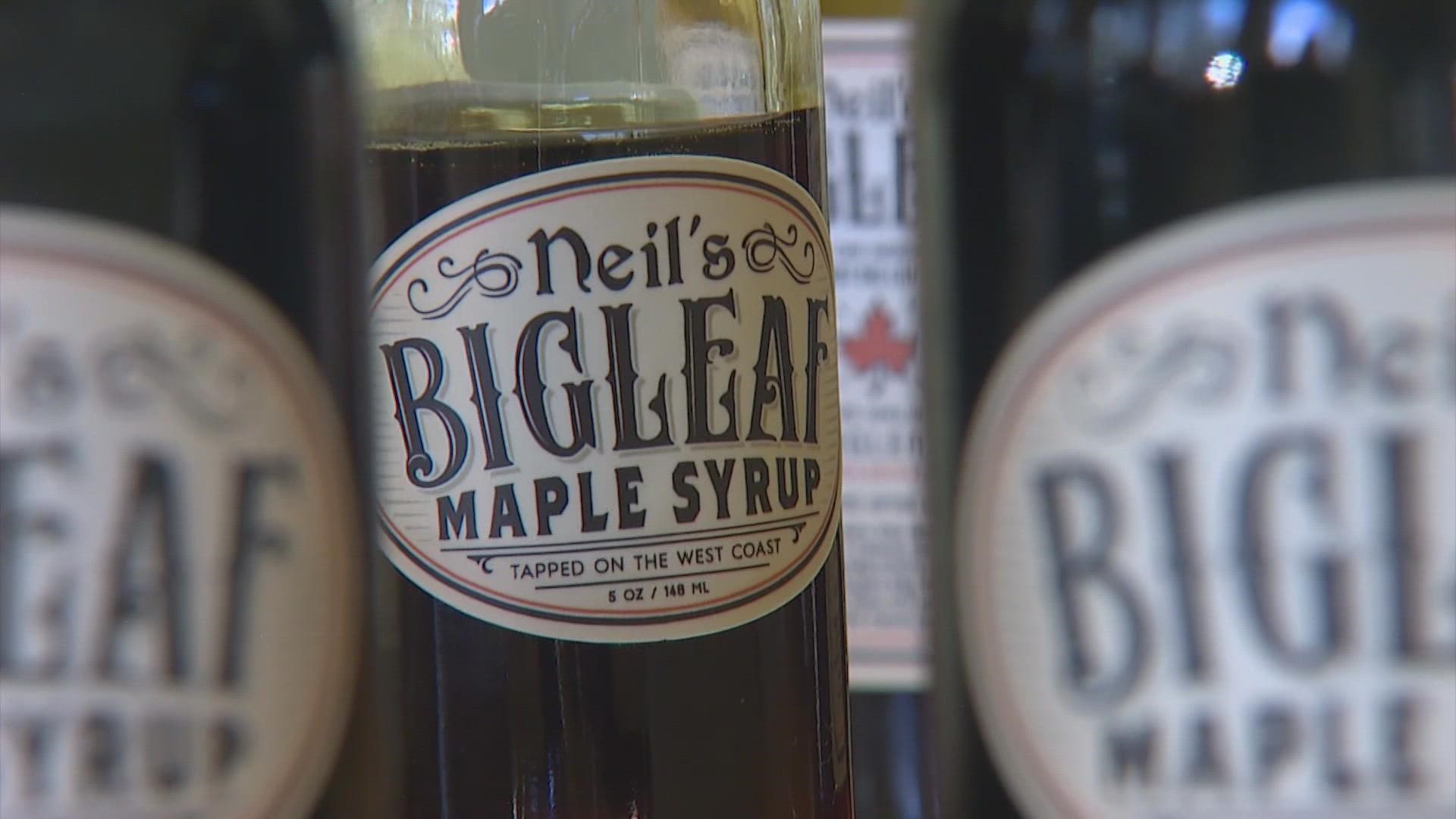ACME, Wash. — When most of us think of maple syrup, we picture the Eastern U.S. and Canada where sugar maple trees number in the millions. But here in Washington, one man is daring to make syrup from the maple trees we have here — the bigleaf maple.
His name is Neil McLeod, and for the past five years, he’s been making and selling small batches of maple syrup on a farm in the tiny town of Acme, Wash., in Whatcom County.
KING 5's Mark Wright met up with Neil earlier this month as he cooked a batch of amber syrup in his hi-tech sugar house.
Ten years ago, no one thought what Neil is doing was possible.
“I think I’ve taken it from being impossible to where you can do it," McLeod said. “Not just at a hobby level. I’ve proven it can be done at a commercial level.”
This year, Neil’s Bigleaf Maple Syrup Company will produce hundreds of gallons that are quickly snapped up by chefs and consumers alike.
“We’re selling out as fast as we can make it. It doesn’t stay on the shelf any time at all,” he said.
Neil’s syrup isn’t cheap. It sells for about $3.50 an ounce on the company’s website.
It’s taken Neil the better part of a decade to figure out how to make syrup from bigleaf maple sap. When asked how he learned to do it, Neil said with a smile, “YouTube, books and a lot of mistakes along the way.”
Neil discovered making syrup on the West Coast is very different from the way they do it back east. The sap flows here are more spread out, and have about half the sugar.
Neil and his son Devin Day have tapped about 2,500 maple trees in several locations in Whatcom County. They connect all the taps with food-grade plastic lines that feed into larger lines that eventually deliver the sap to holding tanks outside the sugar house.
The sap is run through a reverse osmosis machine that pulls pure water out, leaving the sap more concentrated. That way they don’t have to boil it as long. For those wondering, it takes about 120 gallons of bigleaf maple sap to make a gallon of syrup.
It takes hours of boiling to reduce the syrup to 66.5% sugar. It’s then filtered and bottled by Neil’s nephew Andrew. No two batches taste exactly the same. Some runs are lighter. Some are darker.
Neil is known as the grandfather of the bigleaf maple syrup movement. His reputation caught the attention of researchers at the University of Washington. Inspired by what he’s doing, they applied for and received a USDA grant from the federal government to study the viability of bigleaf maple syrup flows and production in western Washington.
Researcher Ken Wheiler told KING 5, “We’re trying to collect enough information about how sap flows, when it flows, and how to take care of it and how to produce syrup that other landowners in the state can use that data to make decisions.”
It’s too early to tell if more landowners will jump into the maple syrup business, but Wheiler says it’s clear the industry has a number of environmental benefits.
“This is a way for a landowner to keep their forests as forests,” he said.
“I’d love to replant all the natural rainforest that used to be here, because you can plant, and literally within that first decade be generating revenue in a forest that’s growing that can produce for over a hundred years,” said Day.
“It’s an exciting thought that you can profit from agro-forestry in a different way than cutting the forest down,” he said. “Out of the millions of gallons that are there to be collected in a couple different counties, we’re not even scratching the surface.”
When asked where he hopes all this ends up, Neil said, “I hope it becomes an industry. You know, maybe 20 years from now they'll put a big bronze statue of me out in the woods. That’s what I’m aiming at.”

